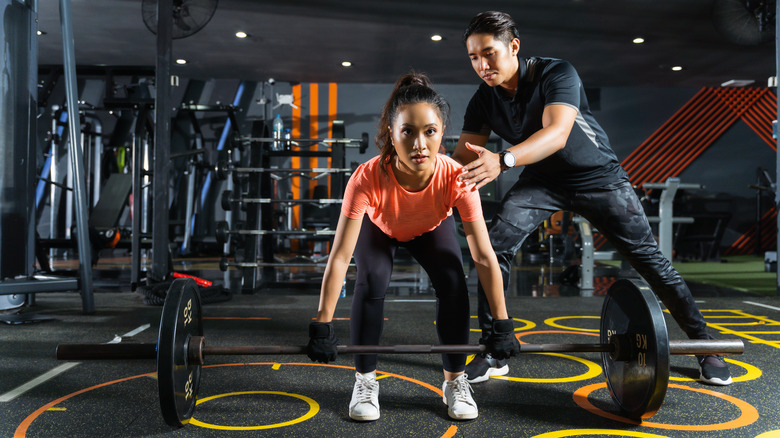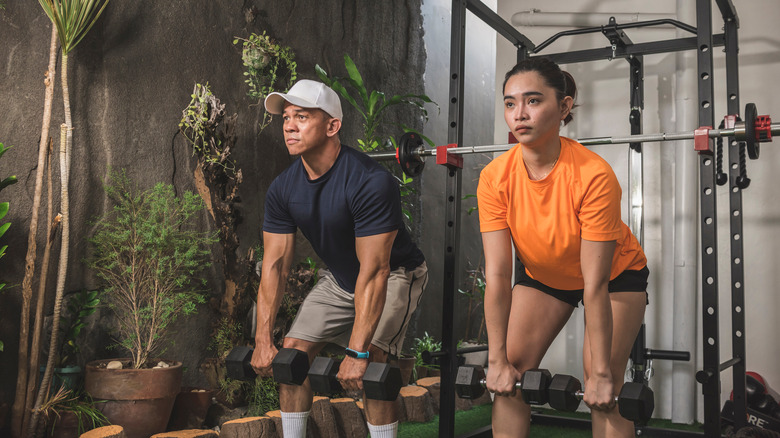What Makes Romanian Deadlifts Different From Regular Deadlifts
Deadlifts are sort of weightlifting 101. They are a fundamental move that teaches people how to approach the bar and, when done right, how to avoid injury. As King of the Gym puts it, the move strengthens the posterior chain which consists of the back, the hamstring, and the glutes. These might not be the muscles that most people think of when they think of weightlifting, but they are absolutely essential to lifting safely. And, more than that, a strong posterior chain reduces a person's overall injury risk and improves their posture, as explained by Shape.
When it comes to training the posterior chain, however, not all deadlifts are the same. There are several variations, but two of the most common are the Romanian deadlift and the standard deadlift. They appear quite similar on the surface, but when the movements are broken down the differences become clear. And in many cases, those differences directly affect the use of the posterior chain.
Changes in hinge points
Powerlifting Technique breaks down the two moves almost point by point. In a standard deadlift, for example, the shoulders are only a little further forward than the bar. In a Romanian deadlift, however, the shoulders are much further forward. Standard deadlifts are taught as a "push off from the floor" technique while Romanian deadlifts are done by "pulling" the bar in through hip motion. And this change in approach is where the posterior chain comes back into the play and the biggest differences between the two exercises are seen.
BarBend explains that Romanian deadlifts both train and are dependent on hamstring and hip strength. They describe it as a hypertrophic exercise focused on these areas, meaning that the workout is intended to enlarge and strengthen specific targeted muscles (via Consortium for Health and Military Performance). To this end, Romanian deadlifts only lower the barbell to the shins before the lifter hinges back into an upright position using their hips and glutes. In a traditional deadlift, the bar is returned to the floor and only then is the lift repeated, which requires the knees to engage as well. Each option works the posterior chain in its own way, which is why lifters often do both despite their somewhat similar appearance.


